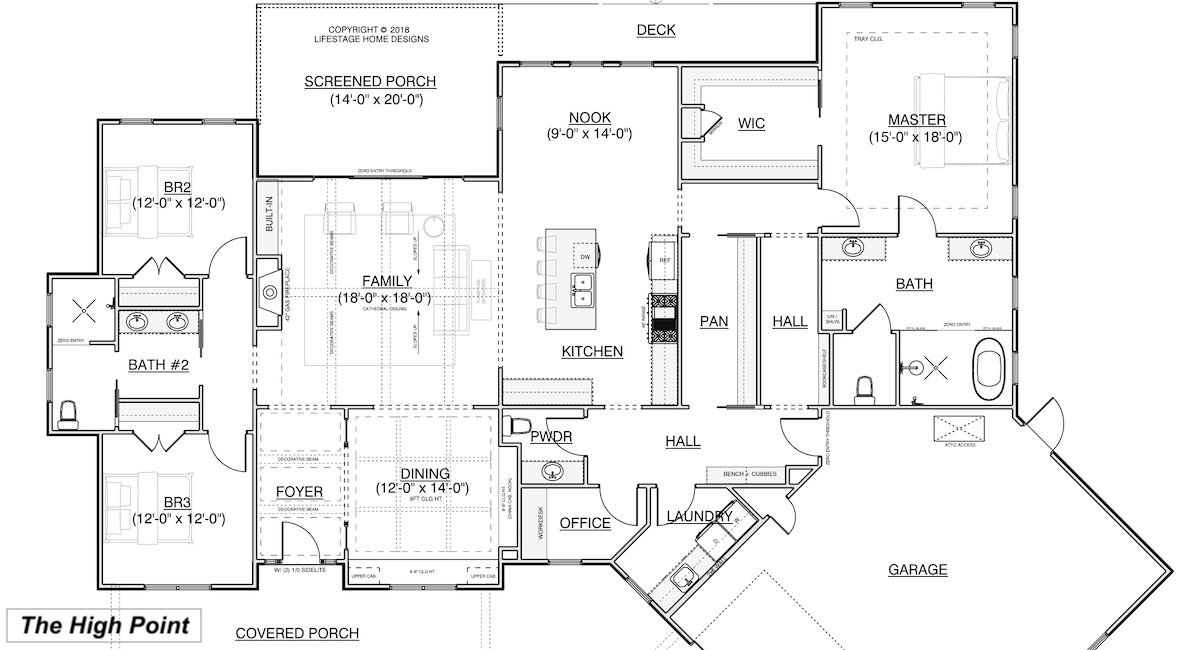Why Open Concept Floor Plans? Because They Work!
The rise of open concept floor plans is one of the most dramatic changes in the history of residential design. After beginning to gain popularity in the 1950s, the demand for open concept floor plans exploded in the 1990s.
Nearly all homes used to be designed with specific, defined areas separated by walls. Usually a main hallway served as an artery that fed into each room. Perhaps most notable, kitchens were often much smaller compared with norms today and were usually placed in the back of the house. Kitchens were viewed as strictly utilitarian spaces and not a room for visitors to go or for inclusion in entertaining or gatherings. These residential design norms started to change in post-war America during the baby boom when families discovered, for example, that being able to keep an eye on their children while working in the kitchen was desirable. During this time as families were getting larger, homes were getting smaller, so space was at a premium. For instance, rooms such as offices or libraries were no longer practical, and homework at the dining room table became more common.
So what characteristics define an open concept floor plan? And why do open concept floor plans work well for multi-generational living and large families?
First of all, an open concept floor plan does NOT include every room. Bedrooms, bathrooms, powder rooms, laundry rooms and home offices have an obvious need for walls and privacy. Rather than sectioning off every room with walls, open concept floor plans combine two or three distinct spaces — usually the kitchen, dining room and/or a den or living room — into one large shared space. Sometimes, an island or bar will create something of a separation between a kitchen and dining area or living area. Instead of walls, vertical support beams do the load-bearing work and support the upper floors or attic.
There are a number of benefits: improved traffic flow and access, improved sociability and ability to host gatherings, and shared light as the daylight from exterior walls reach interior spaces that would have been closed off. Because open concept floor plans have become so popular in today’s market, homes that feature them generally have higher values and are easier to sell when the time comes.
At LifeStage Home Designs, we love open concept floor plans because they are essential to universal design and provide great flexibility — these spaces can serve multiple functions and easily shift from a family room to an entertainment space to a game room, depending on your needs. Likewise, it is easier to move furniture around and change the layout of a room as your family size and needs change over time.
If you are thinking about designing your forever home and have questions, contact us. We love talking to people about universal design!
Add Your Personal Touch
LifeStage Home Designs can work with you to develop the home of your dreams. Simply find a plan that you like, then talk to our expert designers to add the features your family needs – whether that’s a larger garage, an elevator, an enclosed porch, or more.



